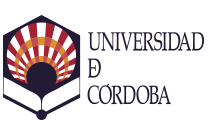Mostrar el registro sencillo del ítem
El dilema de sustituir la caligrafía tradicional por la tecnología para enseñar a escribir
| dc.contributor.author | Franco-Mariscal, Antonio-Joaquín | |
| dc.contributor.author | Hierrezuelo-Osorio, José Manuel | |
| dc.contributor.author | Cruz-Lorite, Isabel María | |
| dc.contributor.author | Cebrián-Robles, Daniel | |
| dc.date.accessioned | 2023-02-22T10:32:18Z | |
| dc.date.available | 2023-02-22T10:32:18Z | |
| dc.date.issued | 2021 | |
| dc.identifier.issn | 2444-3921 | |
| dc.identifier.uri | http://hdl.handle.net/10396/24762 | |
| dc.description.abstract | A dilemma concerning the replacement of calligraphy with technology to teach how to write was posed to 312 pre-service Spanish infant and elementary school teachers (PSTs). A series of arguments of a different nature taken from educational professionals were provided to provide the decision-making stage with a solid ground. 60% of PSTs defended their decision on the basis of opinion rather than scientific sources. Pearson’s chi-squared test did not show any significant differences when comparing qualification and age with the decision adopted or the nature of the argument. Differences were found in women exhibiting lesser preference for change. As conclusion, we found that there is no consensus amongst PSTs with regards to change. This reinforces the need for the educational community to make an effort to try to improve decision-making and the argumentation skills in PSTs. | es_ES |
| dc.description.abstract | Se planteó un dilema sobre la sustitución de la caligrafía por las tecnologías para enseñar a escribir a 312 maestros españoles de educación infantil y primaria en formación inicial. Para tomar la decisión se facilitaron varios argumentos de distinta naturaleza y sentido tomados de profesionales de la educación. El 60% de los maestros defendió su decisión en base a opiniones frente a fuentes científicas. La prueba chi-cuadrado no detectó diferencias significativas al comparar titulación y edad con la decisión adoptada o con la naturaleza del argumento, encontrándose diferencias en las mujeres, con menor preferencia al cambio. Como conclusión se encontró que no existe consenso entre los maestros al posicionarse ante el cambio. Esto refuerza la necesidad de que la comunidad educativa se esfuerce por tratar de mejorar la toma de decisiones y las habilidades de argumentación de los maestros. | es_ES |
| dc.format.mimetype | application/pdf | es_ES |
| dc.language.iso | eng | es_ES |
| dc.publisher | Universidad de Córdoba, UCOPress | es_ES |
| dc.rights | https://creativecommons.org/licenses/by-nc-nd/4.0/ | es_ES |
| dc.source | International Journal for 21st Century Education 8 (1), 18-36 (2021) | es_ES |
| dc.subject | Educational dilemmas | es_ES |
| dc.subject | Nursery and elementary pre-service teachers | es_ES |
| dc.subject | Decision-making | es_ES |
| dc.subject | Argumentation | es_ES |
| dc.subject | Digital competence | es_ES |
| dc.subject | Dilemas educativos | es_ES |
| dc.subject | Maestros de educación infantil y primaria en formación inicial | es_ES |
| dc.subject | Toma de decisiones | es_ES |
| dc.subject | Argumentación | es_ES |
| dc.subject | Competencia digital | es_ES |
| dc.title | El dilema de sustituir la caligrafía tradicional por la tecnología para enseñar a escribir | es_ES |
| dc.title.alternative | He dilemma of replacing traditional calligraphic skills with technology in the teaching of writing. A study of the attitudes of pre-service infant and primary teacher's | es_ES |
| dc.type | info:eu-repo/semantics/article | es_ES |
| dc.relation.publisherversion | http://www.uco.es/ucopress/ojs/index.php/ij21ce/index | es_ES |
| dc.rights.accessRights | info:eu-repo/semantics/openAccess | es_ES |

